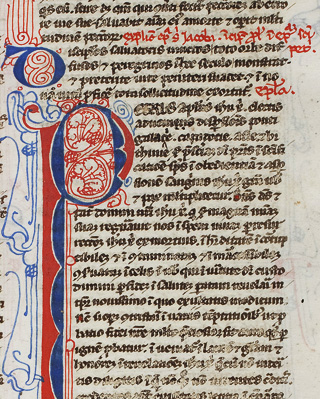The New Testament consists of a collection of four lives of Christianity's key figure, Jesus Christ. These Gospels are supplemented with an account of the deeds of Christ's earliest followers (the Acts of the Apostles), a series of letters written by those followers and a book of prophecy known as the 'Apocalypse' or the 'Revelation of St John the Divine'.
The earliest surviving evidence for a life of Christ (St John’s Gospel) dates to about 125AD, although it is likely that written lives were circulating several decades before this.
The question of exactly which books the Bible should contain and precisely how certain passages should be worded remained open to debate throughout the Middle Ages. Surviving evidence suggests that a number of books – such as the Gospel of Thomas – were eventually left out. The Bible we know today had, however, largely taken shape by the time Roman emperors chose to legalise and support Christianity in the 4th century. During the course of that century, St Jerome not only translated the Bible into Latin but played an important role in determining what would be included in the biblical canon.
This manuscript leaf is one of three detached leaves from a friar's Bible. All three are from a copy of Jerome’s Latin Vulgate Bible made about 1275. Together they are the oldest items in the Canterbury collection. This leaf contains material from the New Testament, specifically a fragment of a letter sent by the aspostle James and a fragment of the first epistle of the apostle Peter.
Further Reading
Christopher de Hamel, The Book: A history of the Bible (London: Phaidon, 2001), chapter 5.

